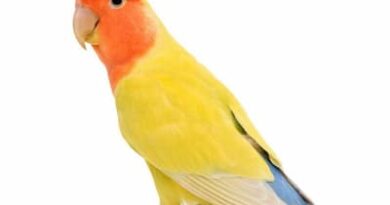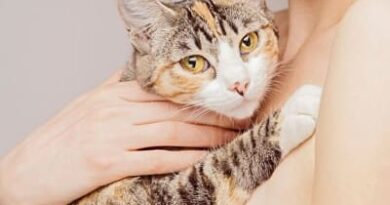Benefits of cutting a dog’s hair
Benefits of cutting a dog's hair
The haircut of dogs is usually associated with certain breeds, which have characteristic hairstyles, or with specimens that participate in beauty exhibitions. But the truth is that cutting hair can be an option for all those dogs whose fur allows or requires a cut.

Comfort
A long and well-cared-for coat is spectacular, but we don’t always have the time to keep it in perfect condition, which can lead to tangles, knots, dreadlocks , etc. These are not only an aesthetic problem, but can even cause skin damage and discomfort such as irritation, pulling and even dermatitis. Maintaining this type of coat requires brushing almost daily. Therefore, if we cannot dedicate a few minutes to it every day, one option would be to cut it . In this way, the coat will look healthy and well cared for, even if it does not reach its full length, and it will be easier for us to wash it, apply shampoo or any other product, dry it, comb it, etc. In other words, its care will be easier.
On the other hand, a shorter coat can also be more comfortable for the dog itself , especially during the hot months. The cut can be done by a professional dog groomer or by us at home. We just have to have a quality cutting machine that allows fast, efficient and safe work, like the ones offered by MOSER Animal . Their machines stand out for being very easy to use and for adapting to different types of hair, and they even have ideal models for cutting the hair on the pads, something that is often forgotten and that is also very important to take into account.
Hygiene
A long hair can be dragged on the ground, get into the drinker or feeder or get dirty with urine, feces and other fluids such as saliva, legañas or blood. Therefore, keeping it short helps us maintain hygiene. In these cases, it may be enough that we cut the hair around the anus and genitals, ears, eyes or chin, in addition to the one that comes into contact with the ground. But be careful, because it has been common practice to remove the hair from inside the ear canal under the pretext of improving ventilation and hygiene of said canal, but the truth is that pulling out these hairs is counterproductive. Removing them could favor the appearance of otitis . Also remember that you do not have to cut the whiskers, which are the specialized hairs found on the eyebrows, muzzle, etc., and which have a specific function related to the sense of touch.
Health
Sometimes, dogs can get hurt and get wounds that will need dressings . To facilitate recovery and prevent friction with the hair from triggering infections, it is a good idea to trim the hair in the area . In fact, this cut is usually the first step when starting to clean and disinfect a wound.
Another case in which it can be recommended and, therefore, it is another of the benefits of cutting the hair of dogs for health reasons is when it grows between the fingers and the plantar pads . Long hair in this area can make the dog slip on some floors, hindering its mobility and causing falls, as well as accumulating mud and dirt from outside. To do this, we recommend consulting this other article: “ How to cut the hair of the dog’s pads? ”.
Deworming
The haircut can also help us to better visualize the animal’s body, making it easier for us to detect the presence of external parasites such as ticks or fleas, which can go unnoticed by excessively long hair. In addition to being able to make a tactile recognition, a short hair will help us to see them better and to be able to locate and eradicate them. This better visualization of the entire body also favors that we better observe any alteration, such as a wound, inflammation or the growth of a lump.
Communication
Some dogs have very long, thick or heavy fur, which falls over the eyes and makes it difficult to see and move the tail and ears . Since dogs use their bodies to communicate, a good cut, especially in these areas, can help them to be better understood both by their peers and by us.
Socialization
Cutting our dog’s hair is a way of getting him used to being handled all over his body, which favors the creation and maintenance of the bond between him and us . In addition, we can turn the moment into a good opportunity to practice education, rewarding him when he is still, allows himself to be manipulated, cut, etc. Of course, for this it is very important to take into account the following:
- The first cut should be carried out as soon as the veterinarian or the canine hairdresser tells us. Beforehand, it is important that we introduce him to the cutting tools, let him smell them and reward him so that he associates them with positive stimuli .
- It is essential that the whole experience be beneficial for the dog, since otherwise we will not be able to create that bond. If he is afraid or we see that he is stressed, it is preferable to leave it for another time.
Cutting is not shaving
Now that you know the benefits of cutting your dog’s hair, we must make it clear that the cut we are talking about is not shaved. Cutting the hair is a good measure, but shaving it to zero is counterproductive and even dangerous. In other words, we take advantage of the benefits of cutting in dogs when we leave a length of several centimeters of hair, which can be more or less depending on the needs of the dog itself. On the other hand, if we cut close to the skin, that is, if we shave our dog practically to zero, what we do is expose it to different aggressions , such as those derived from weather conditions, both hot and cold, or from contact with multiple elements that could cause injury.
Although many times the intention is to cut the hair as much as possible because we understand that it is the way to help the dog fight the heat, the truth is that we are achieving the opposite effect by removing the protection offered by the hair and allowing direct exposure of your skin. In addition, for dogs that have hair (hairless dog breeds are exempt ), it is not natural to have their coat completely shaved, so it can also cause problems when interacting with other dogs .
For these reasons, zero cut is reserved only for situations where it is essential. For example, when a surgical intervention is needed. In these cases, the veterinarian will shave the area to clearly visualize the area that must be worked on and to prevent the hairs from causing an infection when they come into contact with the wound.



